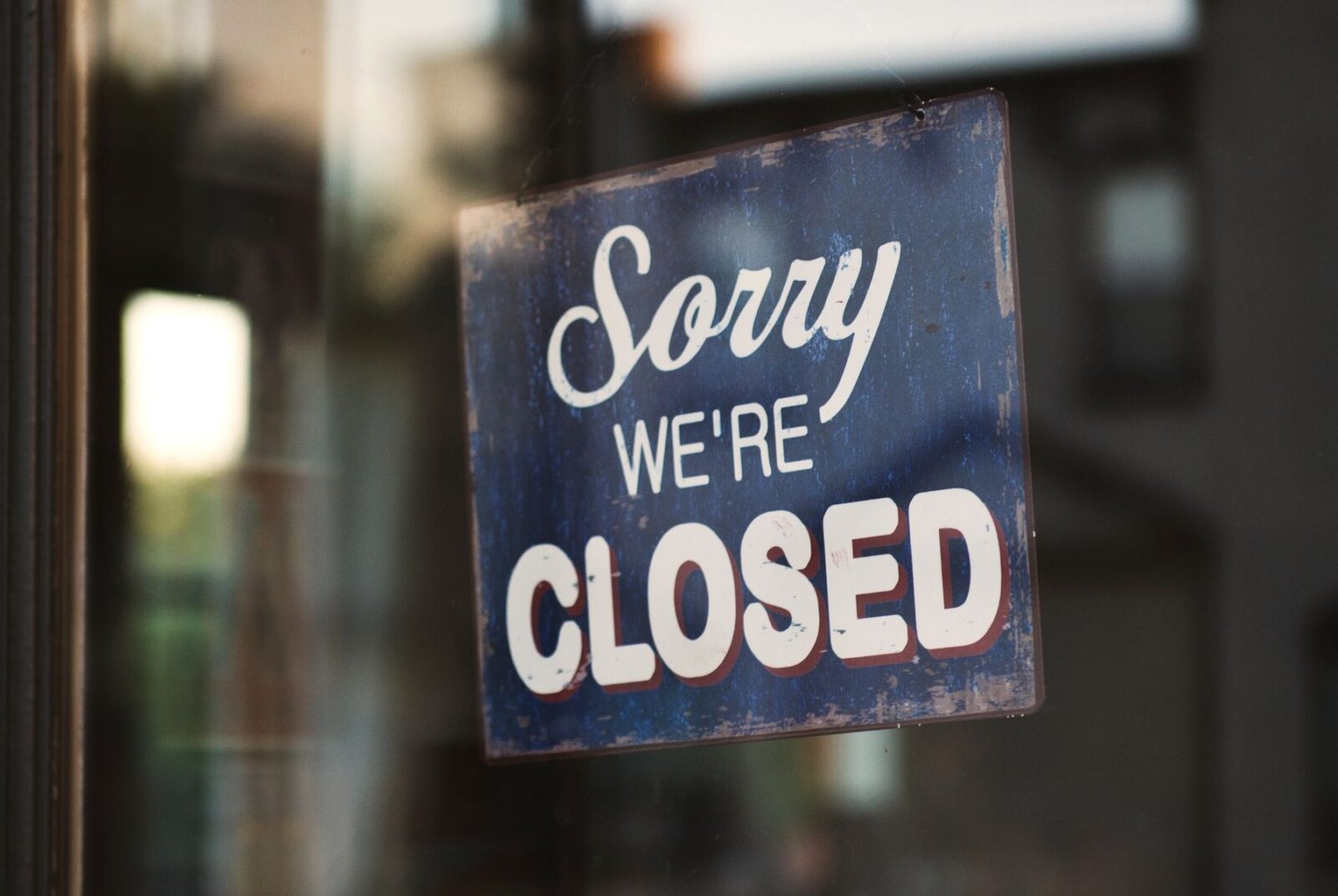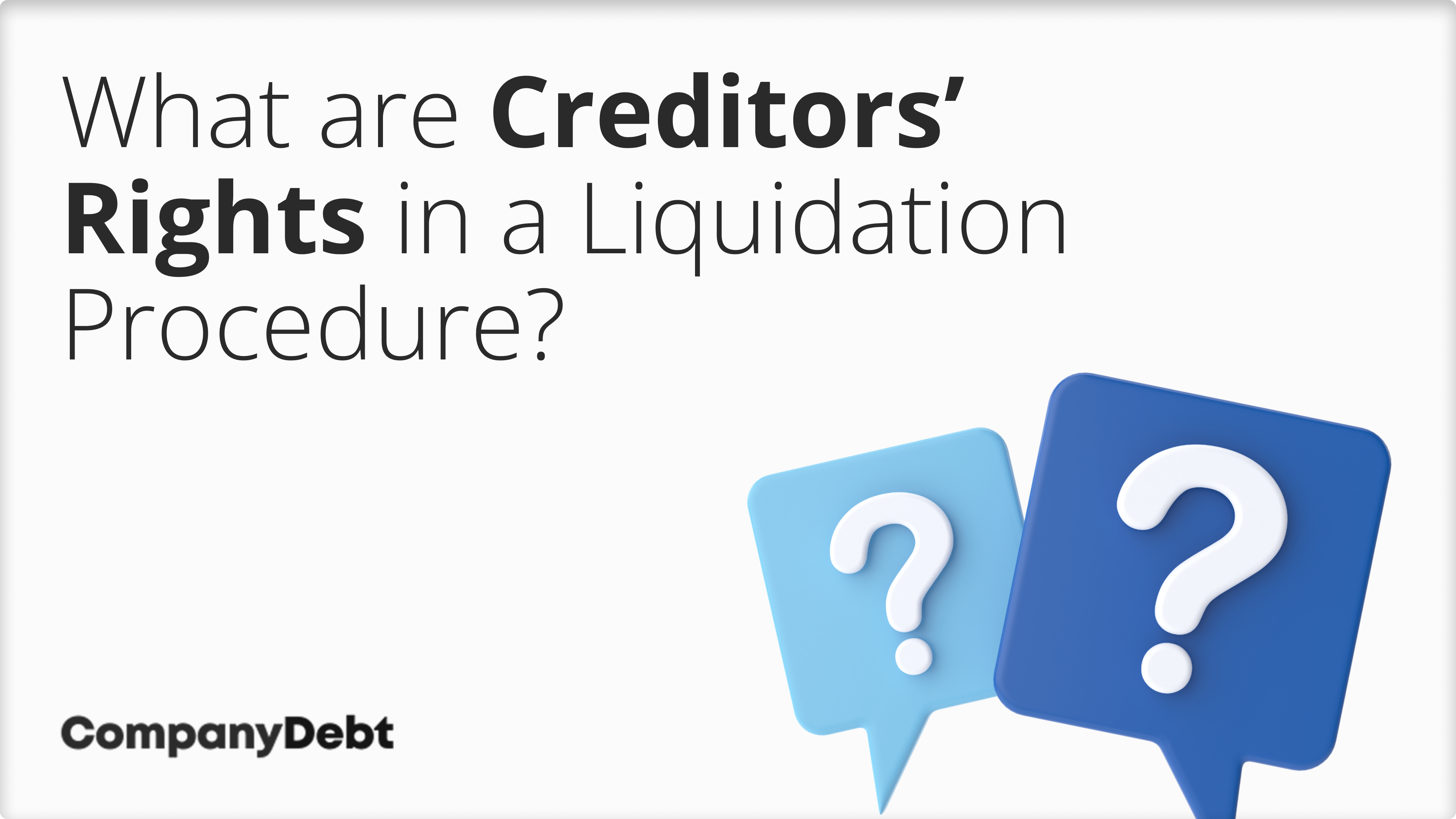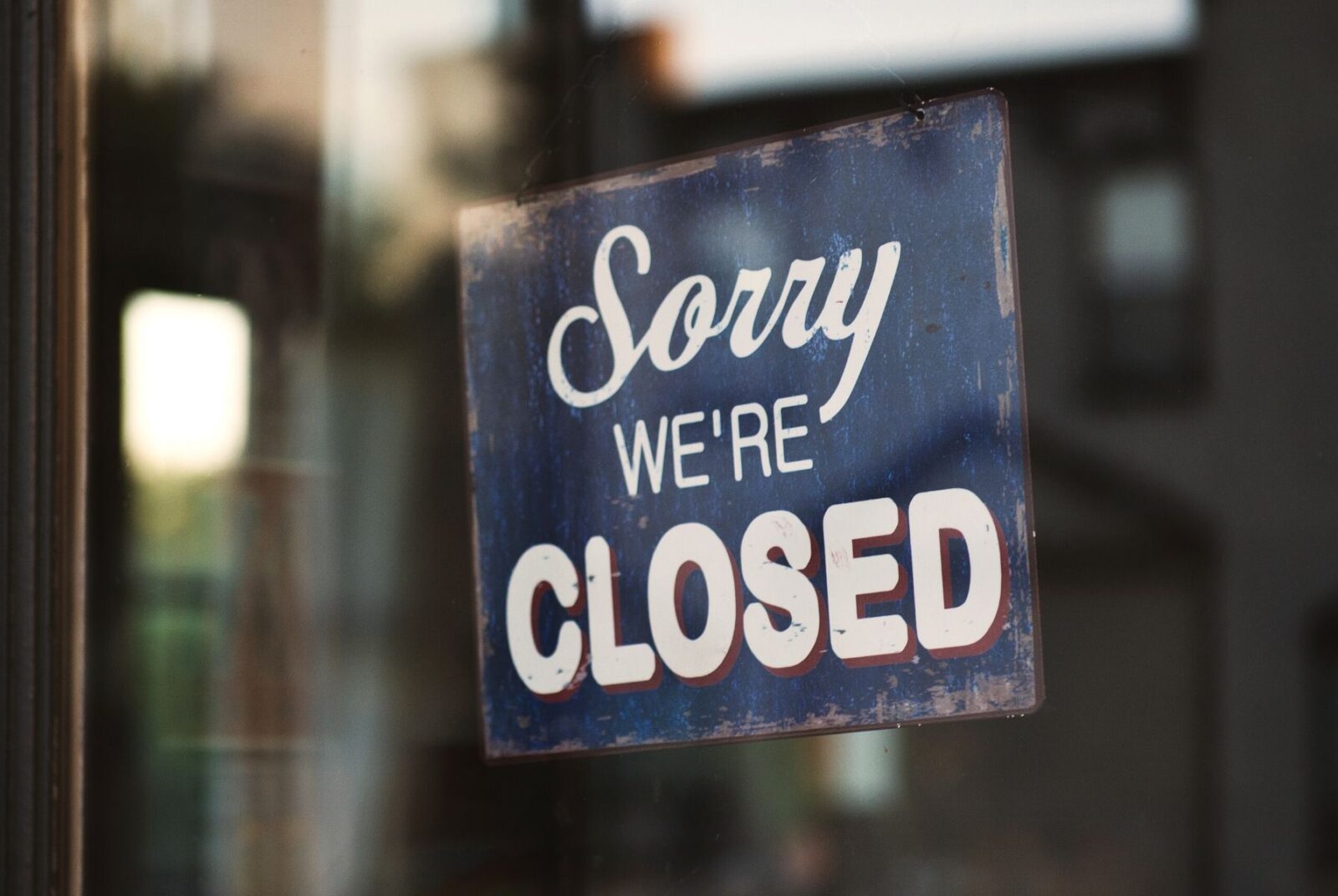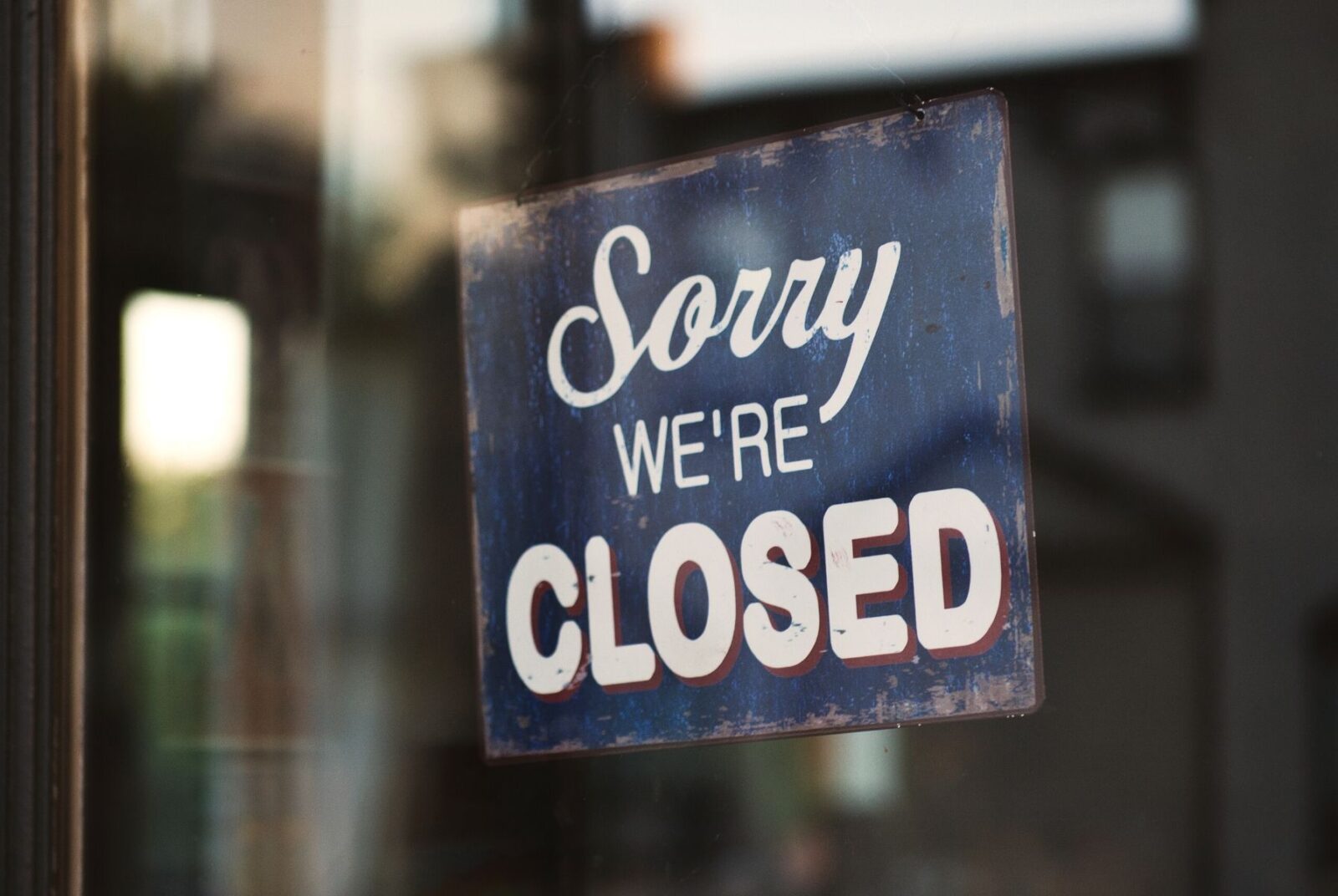
What are Creditors’ Rights in a Liquidation?
When a company is liquidated, those parties owed money are known as creditors.
These creditors are categorised into two primary groups: secured and unsecured. Secured creditors have legal claims over specific company assets, giving them a higher priority in the repayment hierarchy. Unsecured creditors do not have such security and thus rank lower down the order of priority after certain preferential debts, such as employee wages.
The role of the liquidation process is to repay the creditors in the correct order based on what is available within the insolvent estate.
In this article, I’ll cover the rights of both main creditor groups, so you’ll know what to expect.

- What Creditors Have Priority in a Liquidation
- What are the Rights of Secured Creditors During Liquidation?
- Control over Security
- Participation in the Liquidation Process
- Right to Vote
- Right to Challenge Liquidator’s Fees
- What are the Rights of Unsecured Creditors in a Liquidation Process?
- The Right to Claim Interest
- Bad Debt Relief
- Return of Goods
- Right to Appoint a Liquidator
- Formation of a Liquidation Committee
- Right to Call In-Person Meetings
- FAQs on Creditors’ Rights in Liquidation
What Creditors Have Priority in a Liquidation
If you’re waiting to be paid in a liquidation process, you should expect to be paid in the following creditor hierarchy:
- Costs of Liquidation: The costs of liquidation are the first to be paid from the liquidation proceeds, covering the fees of the liquidator and other costs directly associated with managing and concluding the liquidation process.
- Preferential Creditors: Certain debts have been designated by law as preferential and are paid next. These typically include employee wages up to a certain limit and some contributions to employee pension schemes.
- Secured Creditors: After preferential and liquidation costs, secured creditors are paid from the proceeds of assets to which they have a security interest.
- Unsecured Creditors: Any remaining funds after paying the above claims are then distributed to unsecured creditors. This group includes suppliers, customers, and any other creditors without security or preferential status.
- Shareholders or Members: If any funds remain after all creditors have been paid, the surplus is distributed to the company’s shareholders or members.
>>Read our full article on Who Gets Paid First in Liquidation
What are the Rights of Secured Creditors During Liquidation?
Secured creditors are those who have a legal claim or a charge over a company’s assets as security for the debt owed to them. This prioritises their claims above those of unsecured creditors when it comes to repayment during the liquidation process.
In addition to this right to prioritised payment, secured creditors have the following rights:
Control over Security
In liquidation, secured creditors may exercise control over the assets secured against their loans. This right allows them to independently sell these assets to recover the amounts owed to them, outside of the liquidation process’s general asset sale. The ability to take direct action provides secured creditors with a significant degree of influence over the recovery of their debts.
Participation in the Liquidation Process
In the liquidation process, secured creditors must actively engage by substantiating their claims to the liquidator, proving both their right to specific assets as security and the value of these assets.
Right to Vote
Secured creditors can vote in liquidation meetings, but how much their vote counts depends partly on how much money they’re still owed beyond the value of their security.
For example, if a secured creditor has a security worth £50,000 but is owed £70,000, the extra £20,000 they’re owed is treated like an unsecured debt for voting purposes. This means they get to vote as a secured creditor for the £50,000 secured part of their claim, and also get additional voting power for the £20,000 unsecured part, just like unsecured creditors. This ensures their voting power reflects both their secured and any unsecured interests, making the process fairer for everyone involved.
Right to Challenge Liquidator’s Fees
Secured creditors have the right to scrutinise and challenge the fees charged by the liquidator during the liquidation process.
If secured creditors believe these fees are excessive or unjustifiably high, they can raise concerns with the liquidation committee or the court.
What are the Rights of Unsecured Creditors in a Liquidation Process?
Unsecured creditors do not have the benefit of a security interest in the company’s assets. Their repayment occurs after secured creditors and certain preferential creditors, such as employees, are paid.
Any distribution to unsecured creditors depends on the remaining assets available, often resulting in partial repayment of their claims.
Unsecured creditors must submit proof of their claims to the liquidator, who then assesses and admits them for dividend distribution.
The Right to Claim Interest
In addition to the principal amount owed, unsecured creditors may have the right to claim interest up until the date of liquidation. This right, however, is contingent upon the available assets exceeding the total principal amounts owed to all admitted unsecured creditors.
The payment of interest is a lower priority within the unsecured creditor category and is typically a small fraction of the claim due to the limited residual assets.
Bad Debt Relief
Unsecured creditors have the right to claim VAT Bad Debt Relief on the amounts they’re unable to recover. This relief allows them to recover some of the financial loss incurred through the liquidation process by claiming back the VAT paid to the tax authority on these uncollectible amounts, provided they meet certain conditions.
Return of Goods
Unsecured creditors may have certain rights regarding the return of goods supplied to the company under retention of title (RoT) clauses. These clauses allow suppliers to retain ownership of goods until they are paid in full. In the event of liquidation, RoT clauses can provide a mechanism for unsecured creditors to reclaim goods not yet paid for, provided these claims are validated and accepted by the liquidator.
Right to Appoint a Liquidator
Unsecured creditors also have a collective right to influence the appointment of the liquidator. During the early stages of the liquidation process, creditors can nominate a liquidator of their choice, subject to approval at a creditors’ meeting.
The nomination and approval of a liquidator by unsecured creditors are determined through a voting process, where votes are weighted according to the size of each creditor’s claim.
A liquidator with a strong track record may increase unsecured creditors’ confidence in the liquidation’s management and outcome.
Formation of a Liquidation Committee
A liquidation committee, primarily formed from the company’s creditors, plays a crucial role in overseeing the liquidation process. This committee represents the interests of all creditors, providing a platform for both secured and unsecured creditors to have a say in key decisions.
Participation in the committee allows creditors to monitor costs, review the liquidator’s proposals, and contribute to decision-making, potentially influencing the outcome in their favour.
Right to Call In-Person Meetings
Creditors, including unsecured ones, retain the right to request in-person meetings with the liquidator. These meetings serve as a forum for creditors to raise concerns, seek clarifications, and propose suggestions directly to the liquidator.
Such meetings can be instrumental in fostering a cooperative environment where the liquidator and creditors work together towards maximising returns from the liquidation estate. It also ensures that creditors are kept informed of progress and any challenges encountered during the liquidation process.
FAQs on Creditors’ Rights in Liquidation
Are there any circumstances under which secured creditors might not recover the full value of their secured assets?
Yes, secured creditors might not recover the full value if the sale of the secured assets doesn’t cover the total debt owed. Market conditions, asset depreciation, or legal costs can reduce the net proceeds from asset sales, impacting the recovery amount.
How are disputes over creditor claims resolved during liquidation?
Disputes over creditor claims are resolved by the liquidator, who assesses the validity and value of each claim based on evidence provided. If a creditor disagrees with the liquidator’s decision, they can appeal to the court for a resolution.
What happens if the liquidation proceeds are insufficient to cover all creditor claims?
If the liquidation proceeds are insufficient, creditors are paid in the legal order of priority until the funds are depleted. Secured creditors are paid first from the proceeds of their security, followed by preferential creditors, and then unsecured creditors. If funds run out, some creditors may not receive full payment or any payment at all.








